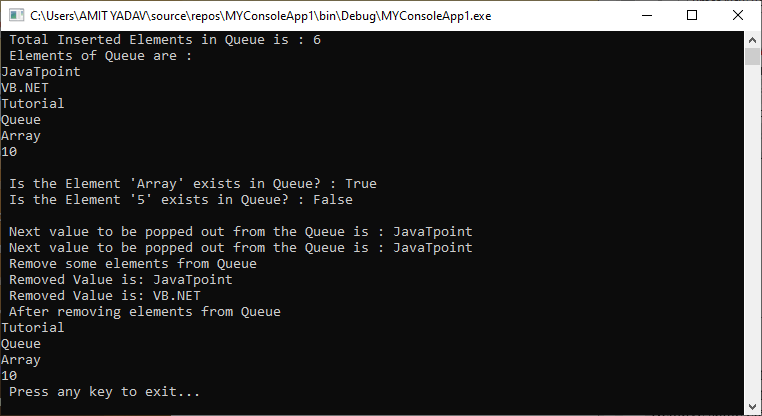VB.NET QueueIn VB.NET, the Queue is used to store a collection of objects that follow FIFO (First In, First Out). Generally, the Queue class is provided by the VB .NET collection, which is useful for accessing elements from a collection of objects in the first-in-first-out style, which means the item inserted first in the queue will come out first from the queue. Furthermore, it uses Enqueue() and Dequeue() operation to insert and delete element from the collection of objects in Queue, where the Enqueue() operation is used to add elements at the end of the queue, and the Dequeue() operation is used to remove items starting from the queue. The following is the pictorial representation of the Enqueue and Dequeue process in the VB.NET Queue. 
In this diagram, the Enqueue represents the Queue's insertion, and the Dequeue represents the deletion of the items from the Queue. Methods of VB.NET QueueThe following are the most commonly used methods of the Queue in VB.NET.
Let's create a program to understand the various function of Queue in the VB.NET programming language. Que_col.vb Output: 
Next TopicVB.NET Dynamic Array
|
 For Videos Join Our Youtube Channel: Join Now
For Videos Join Our Youtube Channel: Join Now
Feedback
- Send your Feedback to [email protected]
Help Others, Please Share










